Water Reclamation
The City of Fargo and Tharaldson Ethanol work together in a unique water reclamation partnership that benefits not only the City and the industry, but the environment as well. Under authorization of the North Dakota Discharge Elimination System permit, the City of Fargo Wastewater Treatment Facility (WWTF) discharges treated wastewater to the Red River of the North.
Before it reaches the river, a portion of this discharge is diverted to an advanced water treatment facility for further treatment to produce high quality water for use at the Tharaldson Ethanol Plant. From October 2008 through December 2016, Fargo has produced and supplied Tharaldson Ethanol with just over 2.57 billion gallons. Without this reclaimed resource, valuable ground water, surface water and/or drinking water reserves may have been consumed and depleted.
Project Background - Site Selection
In the summer of 2006, a new 100 million gallon (MG) ethanol plant was being planned in eastern North Dakota, approximately 25 miles west of the City of Fargo. The site of the ethanol plant was selected based on rail access, truck access, corn availability, and power availability, but water supply was not given as much consideration. The selected site was within the Cass Rural Water Users District (CRWUD) service area boundary.
The water supply requirements for the ethanol plant were estimated to range from approximately 790,000 gallons per day (gpd) during winter months to 1.4 million gallons per day (mgd) during warm summer months, with an annual average demand of approximately 955,000 gpd.
Legislation regarding rural water system boundaries established the right for CRWUD to sell water within its respective boundary. The water supply for the ethanol plant was pursued from CRWUD and another regional water system, but limited existing appropriations for water use and limited water supply infrastructure posed significant technical, logistical, and regulatory challenges for the regional water systems.
Impact on Fargo Water Resources
To combat the challenges associated with obtaining a new water appropriation in a quantity-limited, drought susceptible region, the ethanol plant approached the City of Fargo in the fall of 2006. The City of Fargo is the largest city in North Dakota and holds significant surface water appropriations for its drinking water supply system. Supply from the City’s drinking water system, however, presented its own challenges.
The City has concerns associated with drought impacts on its water supply system and economics of supplying potable water to the ethanol plant resulted in determining that the City’s potable water supply was not a feasible option for the ethanol plant. The City’s other water resource, wastewater treatment facility (WWTF) effluent was offered to the ethanol plant for consideration as a potential water supply. The concept was attractive to the ethanol plant, and work began to define the requirements.
To ensure that the City could realistically supply water to an industry outside its City limits, Fargo applied for a point of diversion permit to divert its wastewater effluent away from its receiving stream, the Red River, which serves as the primary water supply source for several downstream communities and industries.
To satisfy the North Dakota State Water Commission (NDSWC), an evaluation of river flows compared to water supply requirements was prepared. The evaluation concluded that even during times of high demand and low river flows, such as drought conditions in the late 1980's, the volume of water in the Red River exceeded all water supply requirements. Through this analysis, the NDSWC conditionally approved the City’s point of diversion permit.
Memorandum of Understanding
A memorandum of understanding (MOU) between the City of Fargo, CRWUD, and the Ethanol Plant was drafted to define the project requirements and responsibilities. Through the MOU, it was decided that the City of Fargo would sell reclaimed wastewater to CRWUD, which would sell the reclaimed water to the Ethanol Plant. It was also defined that CRWUD would be responsible for construction of an Effluent Reuse Facility (ERF) capable of producing 1.4 million mgd of reverse osmosis quality water.
The City was responsible for providing the WWTF effluent with a site for construction of the facility, operation and ultimate ownership of the ERF. The Ethanol Plant will use the reclaimed wastewater in its boiler, cooling tower, and ethanol production process. The Ethanol Plant will also send its cooling tower blow-down water back to the Fargo WWTF for treatment and discharge. Fargo and CRWUD share responsibility for construction of parallel 26-mile pipelines from the Fargo WWTF to the Ethanol Plant and back.
The project design and material procurement was completed with review and input by all three stakeholders. The reclamation process utilizes ultra-filtration (UF) membranes followed by reverse osmosis (RO) membranes to meet the water quality and quantity requirements of the Ethanol Plant. The RO concentrate will be blended with the WWTF discharge and the UF backwash and cleaning streams will be directed to the WWTF headworks for treatment.

